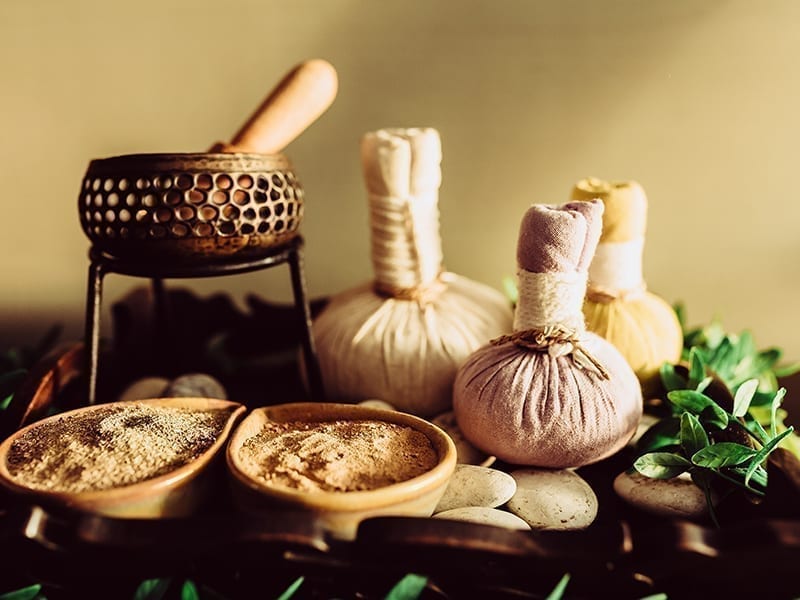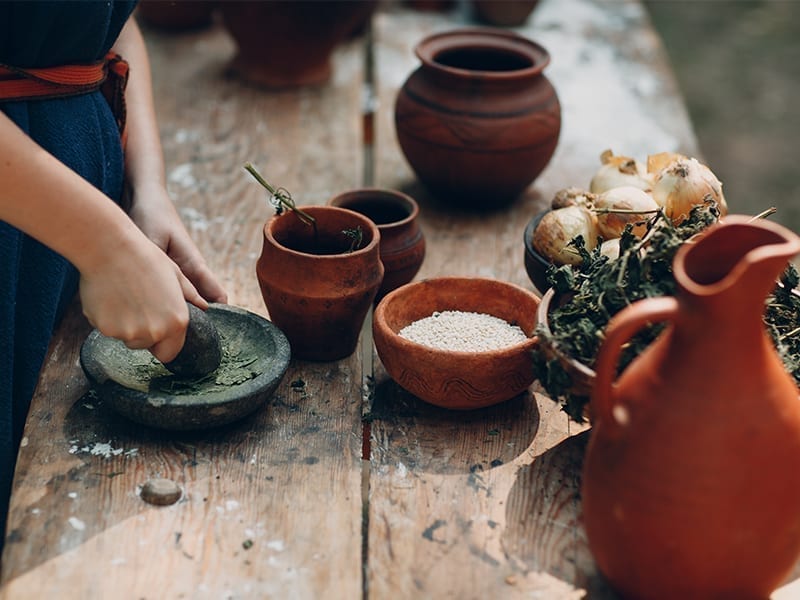Sattvic means ‘pure, clean’, the purity and wisdom constituting one of the three Gunas of sankhya philosophy and leading to true enlightenment.
These three Gunas are:
Sattva: This guna consists of purity, harmony, balance, intelligence, clarity, inspiration, wellness and awareness.
Rajas: Rajas represents energy, activity, change, passion, egoistic, excitement, dynamic, movement, attachment, agitation.
Tamas: The qualities that describe tamas are darkness, inertia, inactivity, heaviness, staleness, laziness, instability, materialistic, insentience and obstruction.
Sattvikta In Your Diet

The sattvic diet is based on foods in Ayurvedic and yogic literature. For ages, sattvic food is known to help you inculcate eating habits that are pure and clean. Sattvic diet can be exemplified as ahimsa (non-violence). Promoting a completely vegetarian diet, a yogi’s food does not include any sources of meat.
If one wants to be mentally fit, they need the physical body to be fit and this can be achieved nutritionally by a sattvic diet.
Sattvic food promotes a sattvik pinda (subtle-body). The sattvik pinda is required for spiritual growth. It is believed that individuals raised on an appropriate and sattvic diet are pious, and through good thinking, follow a virtuous path. Sages and monks followed this way of eating for restoration and radiance, and to generate vibrations that helped them with abstinence. The ability to control your indulgences, whether it was in what you eat, what you speak, and how you interact with others has always been part of being a yogi.
In the yogic diet, it is a rule to start the day with a glass of warm water with lemon juice in it. This purifies the body and helps it to get rid of harmful toxins. By the process of regular detoxification, organs in the body can function well, as a result of which the body is devoid of ailments and diseases.
Yoga diets have confidence in eating in moderation, therefore the yoga diet for weight loss is one of the best ways to lose fat, and it also strengthens your body’s immunity at the same time. Following the diet along with a few minutes of yoga, pranayama or some physical activity will help protect you from lifestyle diseases like blood pressure, diabetes and more.
3 Components Of A Sattvic Diet
1. Good Fats
Yogic nutrition is incomplete without ghee, coconut oil and soaked nuts/seeds. They make food scrumptious, digestible and sufficient. They help in healing the mind too. The presence of fats in the body expands memory, neural conductivity and mental well-being.
2. Plant-Based
Everything in yoga is identified with prana (life power). It helps to give us emotional and physical strength. Cooked food is of less significance—it is believed that heat diminishes fibre, supplements and proteins to a major extent. You’re also supposed to stay away from frozen, canned, highly-processed, or microwaved foods. All the minerals and vitamins are most commonly sourced from raw food and in their natural form. One of the best ways to consume ‘live’ functional enzymes is sprouting. It is given prime importance when it comes to diet or healthy eating habits. Enzymes play a vital role in digestion and fighting disease.
3. Herbs
Teas or blends of intensely flavoured and power-packed herbs like turmeric, ginger, coriander, pepper, cinnamon, and cardamom are the go-to beverages for yogis. They are anti-inflammatory, anti-microbial and detoxifying in nature. Yoga also encourages use of adaptogens like Ashwagandha and Triphala. They are known to lower stress, stimulate thyroid function and protect against oxidative stress.
Sattvic Food & Yoga Diet
Sattvic way of eating is just not about eating right; it is also about the method of cooking, combination and positive attitude towards the food. Food prepared consciously uplifts your mood and mental state. Keeping your meal times regular helps the biological clock work better and keeps the digesting at its best.
Always choose the fresh, seasonal and unprocessed food as groundwork of your diet. It helps in nourishing the body and maintains a peaceful state of mind.
Tamasic foods include meat, eggs, tobacco, garlic, onion, and fermented foods, all of which must be avoided by yogis as they tend to be heavy and distract the mind.
A well-balanced sattvic diet mainly consists of these four groups:
1. Vegetables
- Vegetables are a good source of vitamins, minerals, protein and fibres
- Dark green leafy vegetables are an excellent source of fibre, folate, and carotenoids. These vegetables also consist of minerals, iron, vitamins C, K and calcium. For example, fenugreek (methi) or spinach. Additionally, fenugreek for hair is great for overall scalp health and treating common hair woes like dandruff, hair fall, scalp issues, hair thinning and baldness.
- Beetroot, red and yellow bell peppers, carrots, pumpkins are excellent sources of vitamin A and C. Basically, yellow, red, orange, vegetables are highly recommended; rich colour veggies means more vitamin A.
2. Whole Grains, Legumes & Nuts
- Whole grains, nuts and legumes are called pranic holding units of plant
- Legumes are an excellent source of high-quality protein and iron
- Nuts and seeds contain good fats which help in lowering cholesterol. They are sources of protein, minerals and vitamin E
- Whole grains and unprocessed grains should be the primary source of carbohydrates, such as unpolished/hand pounded rice, whole wheat atta/bread
- Real brown bread is made using whole wheat, with the outer covering intact. It has higher fiber content and is lower on the glycemic index. But calorie-wise, there isn’t a huge difference between white and brown bread. Watch this video to learn how
3. Fruits
- Fruits are excellent sources of natural carbohydrates, which fuels the body
- Fruits also provide a wide range of health-boosting antioxidants, including flavonoids
4. Dairy Products
- Consuming dairy products helps in maintaining bone health as it contains calcium, potassium, protein and phosphorus.
- Dairy can be consumed in the form of fresh milk, yoghurt, cottage cheese and more
- Butter and ghee are excellent sources of good fats. In Yogic diet and Ayurveda, ghee (clarified butter) is considered as life’s nectar and helps in maintaining positive health.
5 Yoga Asanas For The Sattvic Lifestyle
To balance a healthy lifestyle, you should supplement your diet with a yoga routine. Since most people are still working from home, practicing yoga is the need of the hour. Practising yoga will help maintain a healthy body, boost your immune system, improve your respiratory health, and allow your mind to find the focus to concentrate. Here are few asanas that can be practised regularly:
1. Utthita Trikonasana
- Stimulates the abdominal organs
- Helps to relieve stress
- Improves digestion
- Helps relieve the symptoms of menopause
2. Bhujangasana
- Increases the lung volume
- Strengthens the abdominal muscles
- Provides support to your chest
3. Virabhadrasana
- This technique helps you explore your upper body. It helps to open up your chest and strengthen your legs
- This technique also aids in restoring the health of your spine and helps make space for the growing uterus
- It helps your mind relax and stay focused, and maintain balance
4. Janu Sirshasana
- Calms the mind
- Stimulates digestion
- Stretches the hips, back of the body and groin
- Relieves menstrual discomfort
- Stimulates the kidneys and liver
5. Dhanurasana
- Weight Loss: It helps improve the stretch of your abdominal sides and abdomen. Continuous practice of Dhanurasana helps burn body fat easily. Along with this, it also tones your entire body
- Blood Cleansing: Dhanurasana aids effective blood circulation in your body and to your organs.

